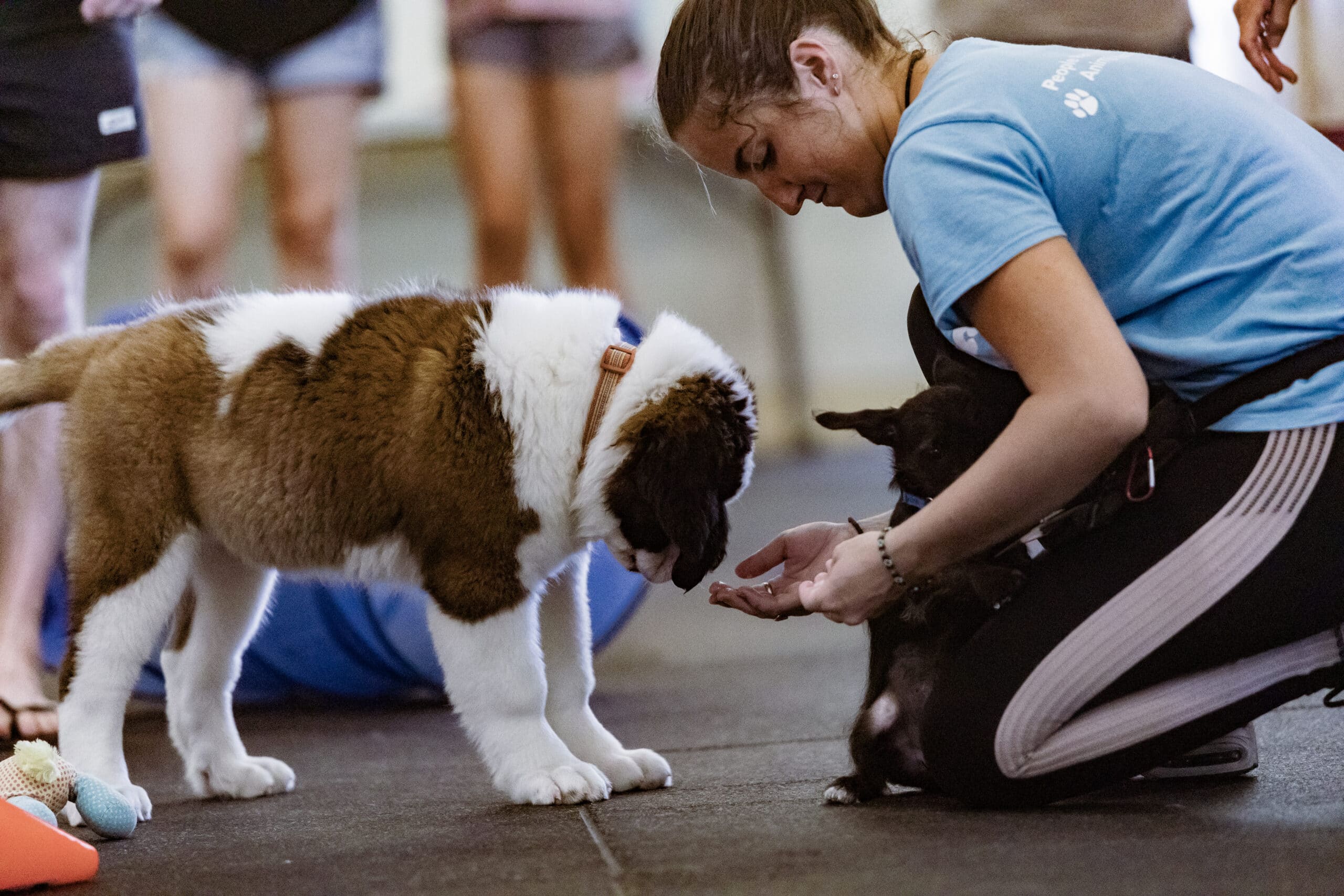
When a person comes across a litter of kittens, their good-hearted instincts often tell them to rush to the kittens’ aid. Surprisingly, human intervention is usually not needed! If you come across a young litter, often the best thing you can do is leave them alone. Their mom will likely be back soon, and it’s critical that the kittens remain in her care — their best chance for survival is at her side. Of course, if you find kittens that are ill or mom doesn’t return within eight hours, you can then step in and help.
Community cats — sometimes referred to as feral cats or strays — are free-roaming cats without an owner. They may or may not be social with humans, but they are often well-adapted to their surroundings and either find a food source or have one provided for them. Check with neighbors to find out if the cats are being managed by someone, or if they are owned cats who are permitted to roam outdoors.
The Three Basic Steps
1) Wait
Mama may be looking for food or in the process of moving her family to a different location. Are the kittens in immediate danger from weather or wildlife? Healthy kittens can survive for hours without food as long as they are warm, so remove them only if they are in grave danger.
2) Watch
Before you decide kittens are truly orphaned, observe from a distance to see if the mother will return to her kittens. It may be several hours. If you get too close or touch the kittens, mom may be spooked by the scent or presence of people hovering near her babies.
3) Help
If mom comes back and the area is safe, leave the kittens with her until they are weaned. You can offer a safe shelter and food, but keep the food some distance from the shelter, as the mother will want to keep other cats away from her litter. If mom doesn’t come back for several hours, remove the kittens. Their best chance for survival without their mother is if you bottle feed and care for them yourself until they are ready for adoption.
Thinking About Dropping Kittens Off at a Shelter?
During kitten season every spring and summer, shelters nationwide are overrun with kittens without adequate resources to care for them. If you have orphan kittens under your care, please foster them in your home until they’re 8 weeks old. At that point, you can adopt them out to friends and family, or contact your local shelter if you need assistance to rehome them.
Need Help Determining a Kitten’s Age?
It can be tough to tell the exact age of a young cat without a veterinarian’s help. Check out this handy guide courtesy of our friends at Alley Cat Allies.

What Do I Need to Foster a Litter of Orphaned Kittens?
So you’ve decided to foster! Thank you! If you are caring for kittens, you’ll need a few supplies to keep them happy and healthy.
Here is a list of items needed for a litter of kittens younger than 4 weeks old:
- Kitten milk replacement (KMR): designed specifically for a kitten’s nutrition and digestion needs. Remember: Do not feed cow’s milk to kittens!
- Feeding syringe and bottles: kitten feeding syringes and bottles are designed to hold the right amount of KMR and fit in the kitten’s mouth.
- Bottle warmer: a simple alternative is warming a mug of clean water in the microwave in 30 second intervals until warm (not hot), and then warming the bottle of milk in the water.
- Baby wipes: to stimulate elimination (going pee and poop) and to help keep kitty healthy.
- Box or carrier, and blankets and towels: to provide a small, secure area for kitty to feel safe and warm.
- Soft bristle tooth brush: to simulate mama’s licking when comforting and cleaning the kitten.
- Wet kitten food: when the kitten is around 4 weeks old you may begin transitioning them to wet kitten food mixed with KMR.
- Warmer: a warm water bottle or rice sock warmer are great options to help young kittens regulate their temperature.
Here is a list of items needed for a litter of kittens older than 4 weeks old:
- Collar and identification: an ID tag and microchip will help your kitten return home to you if he’s ever lost.
- Food and water dishes: keep these in the same place every day so kitty knows where to find them.
- Cat bed: a comfortable, warm cat bed to snooze and feel safe.
- Cat carrier: to safely transport kitty to the vet.
- Scratching post: cats naturally scratch objects for entertainment and to keep their nails short.
- Kitten-safe toys: such as feathered teasers, balls, toy mice, and catnip
Any More Questions?
Our Resource Center is ready to answer any questions you have! Our experienced team can walk you through the process of fostering orphan kittens, and provide guidance for any of your other pet-related questions as well. However, if it’s an emergency, always contact a veterinary hospital directly.


